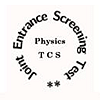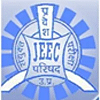BE ECE Syllabus and Subjects

BE ECE is a four years undergraduate degree program, wherein the BE Electronics and Communication Engineering subjects are divided into eight semesters. Through this course, students will gain a variety of abilities in the area of electronics, technology, and communications and will be qualified in both theoretical as well as practical knowledge of the field. This course will ensure that the students will develop professionally in their chosen speciality.
Semester Wise BE ECE Syllabus
The BE ECE syllabus cover everything from learning the theory to acquiring practical skills related to the field of engineering. BE Electronics and Communication Engineering subjects are designed to give students a thorough understanding of the field of study. Total eight semesters are included in the syllabus in the course of four years in the BE ECE course. The following is the BE ECE subjects list, organized by semester:
|
Semester I |
Semester II |
|
Physics/Chemistry |
Fundamentals of Electronics technology |
|
Communicative English, Computational Thinking and Problem Solving |
|
|
Calculus and matrix algebra |
Computer Programming |
|
Semester III |
Semester IV |
|
Electromagnetic Theory & Linear Algebra |
Humanities Elective II & Electronic Circuits |
|
Humanities Elective, Digital systems lab & Network theory |
Transmission lines and Waveguides |
|
Signals and system |
Probability and Random Process |
|
Semester V |
Semester VI |
|
Microprocessor and Microcontroller |
Computer organization and architecture |
|
Optimization Techniques & Linear Integrated Circuit |
|
|
Soft Skills & Live-In- Lab |
Digital Communication, Data communication, and networks |
|
Semester VII |
Semester VIII |
|
Radiofrequency engineering, Information theory, and coding theory |
Project phase 2 |
|
Elective II & III |
Elective IV |
|
Project Phase I |
Elective V |
BE ECE Subjects
The BE Electronics and Communication Engineering course syllabus offer both theoretical and practical aspects of the study. The course curriculum also includes both core and elective subjects, making it very useful for students. The common subjects include:
- Physics/Chemistry
- Computer Programming
- Fundamentals of Electronics technology
- Digital Communication
- Digital Signal Processing
BE ECE Course Structure
BE Electronics and Communication Engineering syllabus format comprises both theory and practical aspects and is organized into eight semesters over four years. The BE Electronics and Communication Engineering course are structured in such a way that both theoretical study and practical training are incorporated into the curriculum. The following is the course structure:
- VIII Semesters
- Elective Subjects
- Core Subjects
- Theory and practical work
- Project Phase I & II
BE ECE Teaching Methodology and Techniques
Different teaching approaches are accounted for in the course curriculum. Practical works are included in addition to the classroom structure of studying. The following are some general teaching methods and strategies, used by many faculties:
- Conceptualized Learning
- Practicals & Training
- Presentations
- Group Projects
- Technical Works
- Project Phase I & II
BE ECE Projects
Students are given various BE Electronics and Communication Engineering projects topics to assist them in learning numerous topics and gaining practical experience. The projects must be finished by the conclusion of the second semester. To complete the course, each candidate must submit a dissertation at the end of the curriculum. The following are some of the most popular BE Electronics and Communication Engineering projects topics:
- A thorough study of electronics
- Working with machines to bring great outcomes
- Coding and computer programming
- VLSI Design lab practices
- Project Phase I & II
BE ECE Reference Books
Many authors and publications offer BE ECE books, which can be available both online and offline. Reference books are designed to help learners to comprehend ideas in greater depth. Academic and reference books are divided into specialities. The following are some of the most preferred BE Electronics and Communication Engineering reference books:
|
Name of the Books |
Authors |
|
An Integrated Course in Electronics and Communication Engineering |
J.B. Gupta |
|
A Textbook on Analog Circuits |
A.Rajkumar |
|
Decode Laplace Transforms, Numerical Methods and Complex Variables |
Dr H.R. Bhapkar |
|
Microelectronic Circuits: Theory and Application |
Adel.S Sedra |








